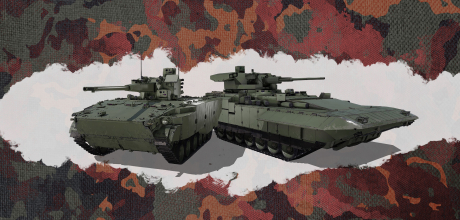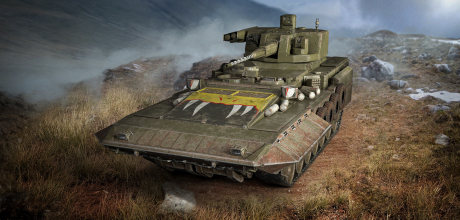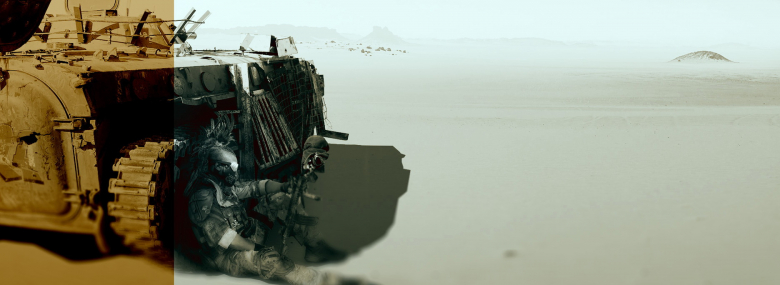
Commanders!
Today, we’d like to tell you about the third prize of the upcoming Wars of the Past Battle Path – the Czech T-72M4CZ Main Battle Tank.

T-72M4CZ
The T-72M4CZ had long been one of the best (and most expensive) T-72 upgrades in the world and was only surpassed by the most recent T-72 upgrades. Its history is rather prosaic and unfortunate since the tank never reached its true potential and, unlike the Polish PT-91, hasn’t been a commercial success. But it is a good example of what happened with the former Warsaw Pact militaries after the fall of the Soviet Union.
In the 1980s, the army of former Czechoslovakia was a powerhouse. It boasted, amongst other equipment, nearly 800 locally produced T-72 series tanks, hundreds of self-propelled guns of various types, over 2000 BMP-1s and 250 BMP-2s. For a country of 15 million people, this was utterly disproportionate – even in the 1980s, the army of this size was kept alive mostly due to politics and did cost most young men a year or two of their lives as well as a sizeable portion of the country’s GDP.
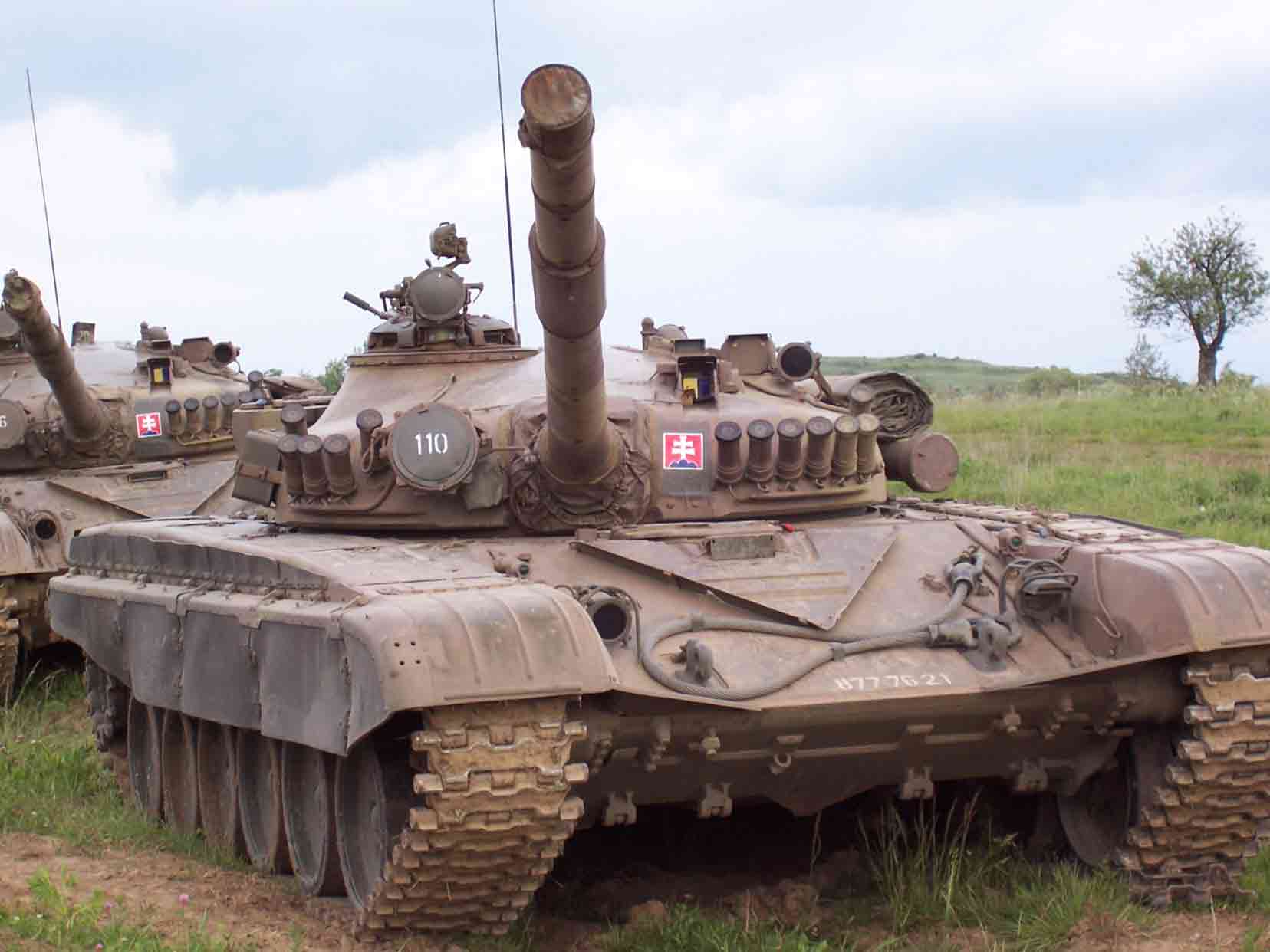
Slovak T-72M1
For the military, things started to decline immediately after 1989 and the fall of the communist regime. The situation was the same as everywhere else – massive budget cuts, layoffs and unit reductions represented the first step of the decade-long army transformation from a Soviet style juggernaut to a small but professional armed force. The 1993 split into the Czech Republic and Slovakia also played a key role in the process. According to the agreement between the two countries, the army was split using a 2:1 ratio. As such, the Czech Republic was left with 957 tanks, 954 BMP-series vehicles and 207 APCs. It had to get rid of 846 tanks, 332 of which were allowed to be exported. It’s worth noting that these numbers affected all types. By January 1, 1993, the Czech Army therefore had 543 T-72 tanks and 414 obsolete T-54/55 series tanks.
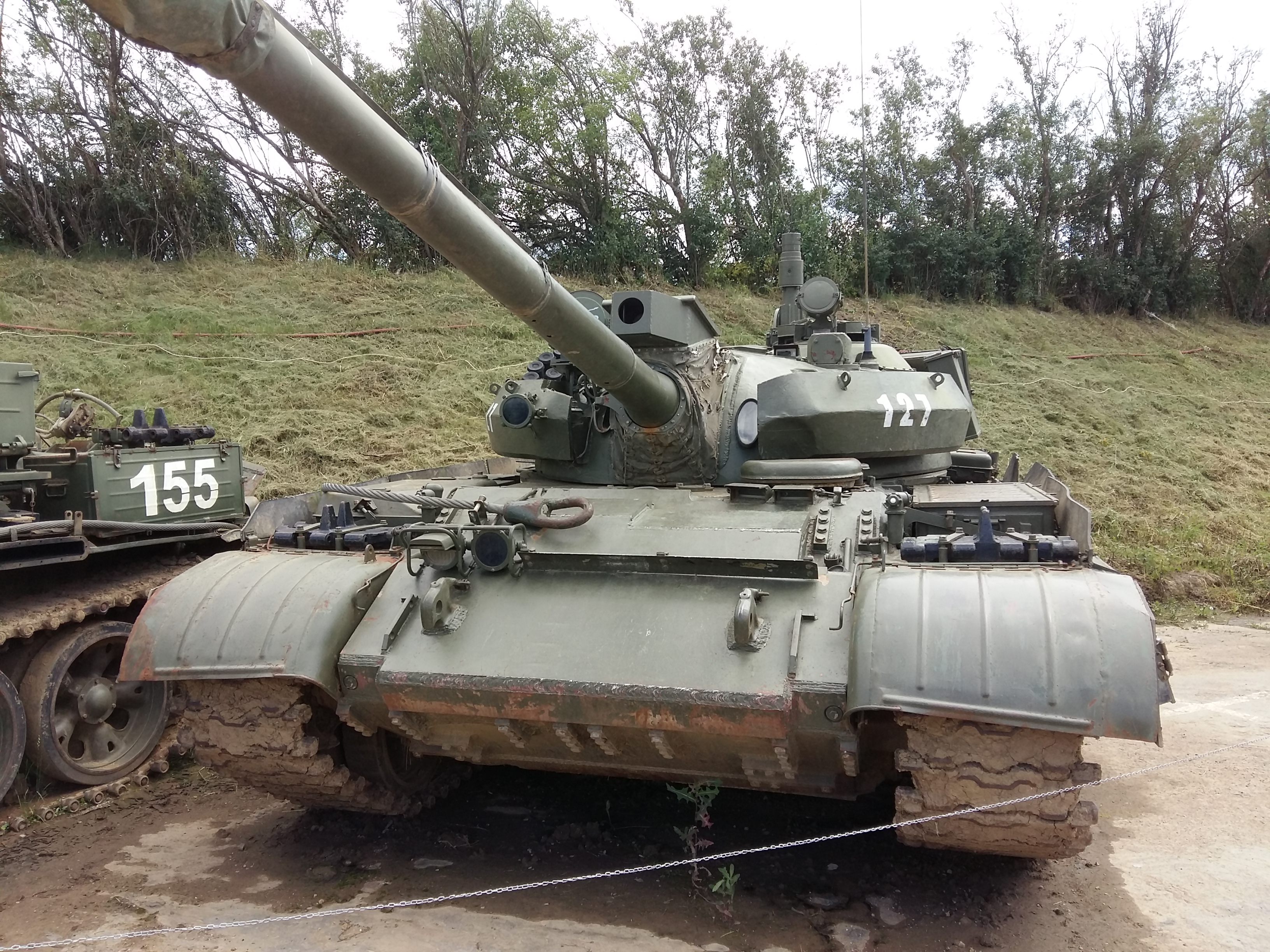
T-55AM2
Another important moment was the Desert Storm experience. Czechoslovakia participated in the conflict on the NATO side (dispatching a chemical defense unit) and the troops experienced first-hand the superiority of western tanks over the obsolete Iraqi MBTs, which were partially of the same type Czechoslovakia was using. Some were even made in Czechoslovakia. This was the primary impulse for a T-72 modernization program for the Czech military that was launched soon afterwards.
The program’s goals were as follows:
- Improving the hit chance under all circumstances (especially in the night, in fog and against moving targets)
- Improving ammunition performance
- Improving survivability
- Improving mobility
- Improving reliability and the ease of maintenance
The company responsible for the upgrade was VOP 025 Nový Jičín (a state company previously responsible for military hardware repairs and maintenance). The first demonstrators with a FCS and optics by SAGEM as well as the DYNA ERA were presented during the 1994 IDET expo.
The choice wasn’t random – there was a lot of cooperation going on between the emerging Czech companies (including the military industry), France, Italy and Britain. The reasons for that were as political as they were practical. By the late 1980s, the Soviet Union and its allies were hopelessly behind in cutting edge technologies and the gap was growing and despite producing and exporting tens of thousands of armored vehicles in several decades, older Soviet tank models just weren’t a competitive export article. The world was flooded with them during the “fire sale” years and innovation was sorely needed.

T-72M4CZ
The modernization program (under the code name VETRA) began in 1995 and the first actual prototype of a major T-72 upgrade was built a year after. It was called T-72M3CZ and featured most of the elements that would later make it to the production version, minus the power pack – the vehicle still used a Soviet era V-46TC engine producing some 840hp. A second prototype – this time under the designation T-72M4CZ – was ready in April 1997.
Most of the existing T-72M4CZ tanks are T-72M (turret) and T-72M1 (hull) hybrids, although at least one tank of this type was rebuilt completely from a T-72M1. Why was this particular configuration selected? Hard to say, the T-72M1 turret surely provides better protection. The most likely reason was the actual state of the vehicles used to convert to the T-72M4CZ standard. They were probably chosen by their actual state.
But this is no ordinary T-72 upgrade. Both the hull and the turret have been completely stripped, refurbished and modified with over 90 percent of all components being either brand new or receiving significant updates. Not much is left of the original tanks.
The tank weighs 48 tons, is 9.8m long (with its cannon pointing forward), 3.79m wide and 2.7m tall. It has a crew of three, positioned the same way the other T-72 models do.
The armor corresponds to the standard values of the abovementioned models, but is enhanced by the presence of the DYNA-72 ERA modules. These increase the protection against HEAT rounds by roughly 220 percent for the frontal hull and 300 percent for the frontal turret (within the 20-35 degree angle area from the axis of the vehicle). The roof protection against HEAT ammunition is increased by 360 percent. The sides of the vehicle are covered with plates of rubber designed to also increase the protection against HEAT rounds as well as additional ERA elements. The ERA kit consists of 124 elements, it’s filled with 95 kilograms of explosives and protects against tandem HEAT warheads.

T-72M4CZ
Additional protection systems include:
- SCC-1 OBRA laser warning system (connected to the smoke launchers as a soft-kill APS)
- VZ902 smoke grenade system with DGO-1 smoke grenades
- REDA anti-radar liner (absorbs microwaves, making the tank harder to detect by ground radars)
- U 2500 camouflage system
- Deugra Fire Suppression System
The firepower generally remains the same as on the T-72M1. The tank is armed with 125mm 2A46 smoothbore cannon with a new fume extractor and thermal sleeve. The gun is fully stabilized (2E28M stabilizer) and fed by an automatic loading mechanism. The tank carries 37 rounds of ammunition.
As a performance upgrade, the tank uses Czech ammunition developed by Synthesia Přerov. The 125/EPpSv-97 APFSDS-T round uses a tungsten penetrator and can penetrate 500mm of RHAe (at 2km and 60 degrees). According to the official military data, the shell is 60 percent more effective than the Soviet 3VBM15 round.

T-72M4CZ
What’s new is the FCS. The tank uses the Italian TURMS-T Fire Control System (TURMS stands for “Tank Universal Reconfigurable Modular System) by Officine Galileo (now a part of the Leonardo group). The system contains a number of cutting edge elements (for its time):
- Laser rangefinder
- IR gun optics
- Panoramic commander optics with a thermal imager
Overall, this system represents a massive upgrade over the original FCS, improving the performance (compared to the T-72M1) as such:
- Effective engagement range improved by 100-120 percent
- Probability of a hit with the first shot by 10 percent (when stationary)
- Probability of a hit with the first shot by 80 to 200 percent (when moving)
However, according to some unofficial sources, these numbers are understated, which would make sense considering the performance is actually classified. The author of this article can, however, personally attest to the tank’s performance.
The original Soviet V-46 engine was replaced by an Israeli powerpack by Nimda. The powerpack consists of the Perkins CV-12-1000 TCA Condor V12 twin-turbo water-cooled 26.1 liter diesel engine producing 1000hp at 2300 RPM. It is paired with the Allison XTG 411-6-N automatic transmission. The maximum speed is 61 km/h on roads, 42-44 km/h off-road and 14 km/h in reverse. It takes roughly 8 to 8.5 seconds to accelerate from 0 to 32 km/h. In other words, the tank is very mobile compared to a standard T-72M1. The suspension was reinforced to compensate for the extra weight but otherwise it remains the same.
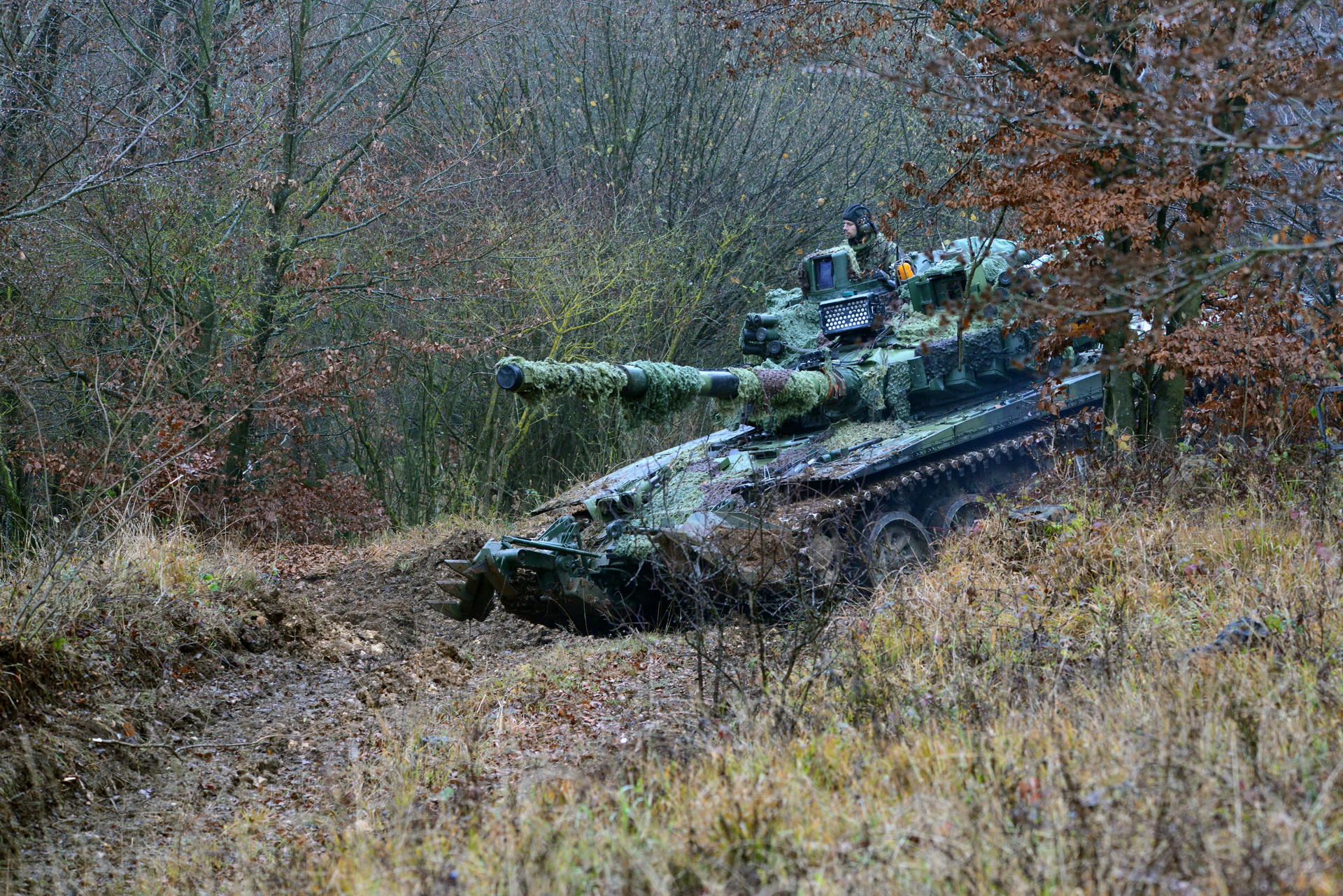
T-72M4CZ with the KMT-72M4 mine-clearing device
The tank carries 1145 liters of fuel internally. The engine consumes roughly 350 liters of fuel per 100km on roads and up to 800 liters per 100km in rough terrain.
And finally, there are the electronics upgrades, which really are the core of the machine. Everything has been digitized, from intercoms to the damage control systems. The tank also features a battlefield management system called BVIS, which features not only the standard GPS functions, but also some additional features, most of which are classified.
The tank can be fitted with the KMT-72M4 mine-clearing device (modified Soviet KMT-6) as well as the NBT-90 dozer blade.
During the upgrade process, the biggest problem turned out to be the integration of the TURMS-T FCS, which took 3 years from 1997 to 2000 and was only solved thanks to the help of a Slovakian company called ZTS Dubnica nad Váhom. In 2000, the prototype was handed over to the military for a series of trials, which it passed with flying colors. It officially entered service in the March of 2001.
Unfortunately, bad timing once again played a role in this tank’s fate. The development, which had started all the way back in 1994, was not only long, but also very costly. At the same time, the country was going through a major economic transformation and the military (which had a bad reputation from the pre-1989 times) wasn’t a priority.
The original plan was to upgrade 350 tanks this way. However, in the April of 2001, the government reduced this number to 140 pieces. This was still more than the country to afford, which led to the signing of a 30-vehicle trial series contract in 2001. This initial series was intended to arm one tank battalion. As a result, 27 tanks were built between 2003 and 2005 and delivered to the 73rd Tank Battalion with 3 command tanks (T-72M4CZ-W) delivered in 2005-2006.
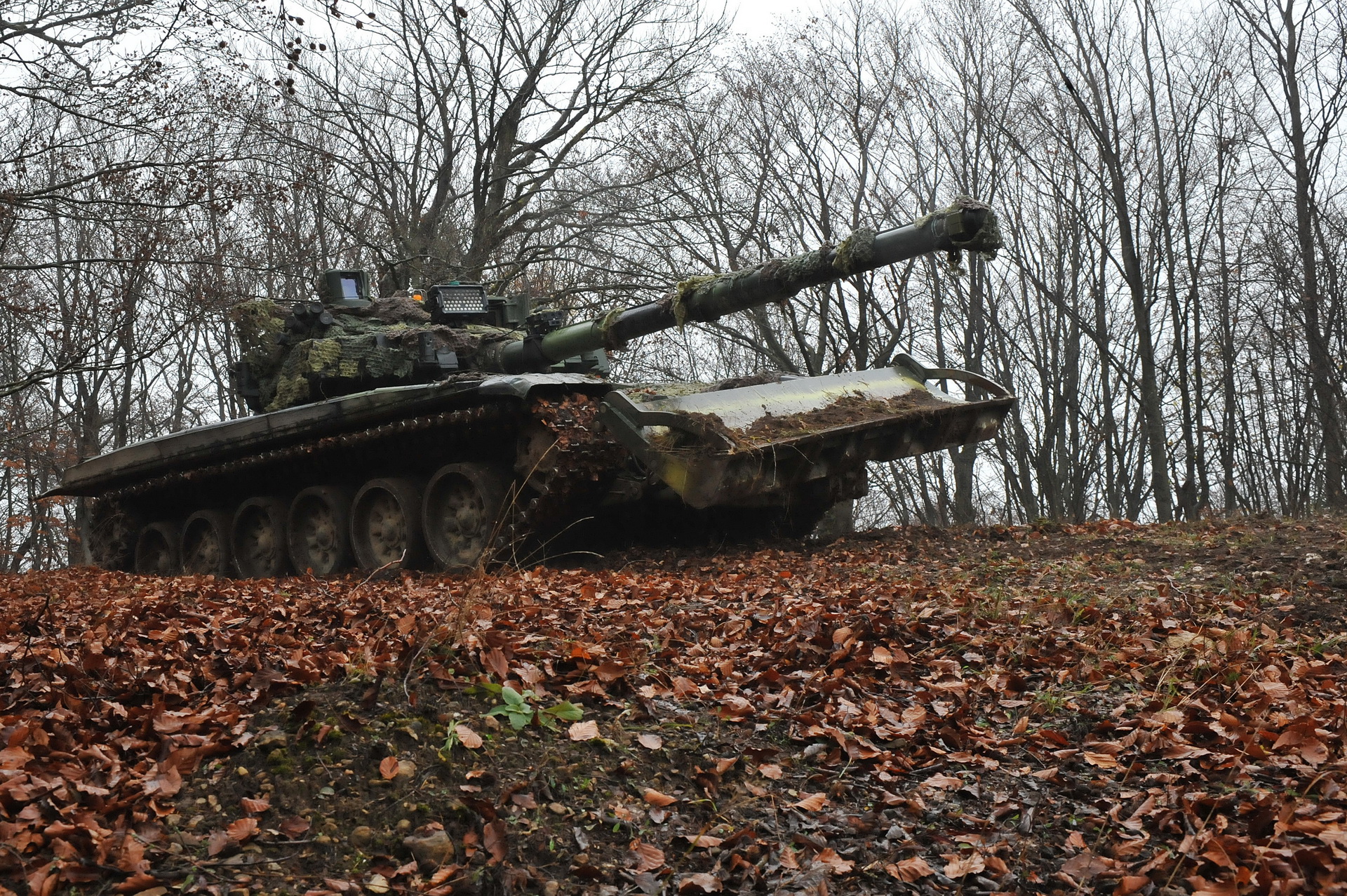
T-72M4CZ with the NBT-90 dozer blade
And... that was it. No other order came due to various political shifts, leaving the Army of the Czech Republic pretty much hanging. What was worse, this low production number meant that the cost per unit was extremely high, which would then be used as yet another argument against purchasing more of these tanks. At the same time, the main MBT of the Czech Army (T-72M/M1) would gradually be phased out and today there are perhaps two dozen left in service alongside their modernized cousins with roughly 60 more mothballed and occasionally sold off to other countries. The T-72M4CZ has never been exported (despite some offers) and has never fired a shot in anger. It did participate in numerous NATO exercises.
Today, the T-72M4CZ is not exactly obsolete, but it’s slowly getting there with parts for its various components – especially the engine – becoming more and more expensive and hard to come by.
Interestingly enough, according to some Russian sources, the tank is superior to an early model T-72B3 (2009-2011) due to the quality of its FCS and electronics as well as the other upgrades.
In 2019, there were talks about upgrading the existing tanks with a new FCS and some other partial improvements, but the COVID-19 pandemic did put an end to these plans (even though they are officially still on the table, only “delayed”). With the Czech tracked IFV cancelled for the same reasons, it does not bode well for the future of Czech mechanized forces. One can only hope that future governments will finally see reason and invest into the development of armor as in today’s unstable world, even smaller countries need standing armies, perhaps more than ever.

Click the image to open a larger version
In Armored Warfare, the T-72M4CZ will be a Tier 7 Premium Main Battle Tank as well as a prize of the Wars of the Past Battle Path campaign, obtainable for reaching Level 40 (whereas the Kinzhal will be available for reaching the maximum level and the Derivatsiya by obtaining its blueprints in the Battle Path Shop and by completing missions).
But before we tell you more about it, here’s the usual disclaimer:
The numbers below are very preliminary as the vehicle has not been properly tested. They are sure to change and should only be discussed as an indicator of how we’d like to set the vehicle up.
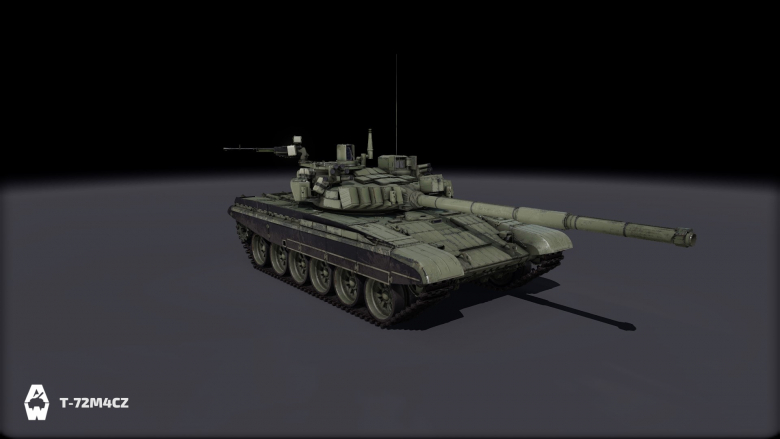
Click the image to open a larger version
With that being said:
The T-72M4CZ will combine the gameplay style you already know from other T-72 series vehicles with several new elements and updates. Performance-wise, it’ll lie somewhere between the T-72M2 Wilk and the T-72B3. All your favorite T-72 elements will be here:
- Explosive Reactive Armor
- 125mm smoothbore cannon with Tier-appropriate shells (including APFSDS, HEAT and HE)
- Low profile with sloped armor and a “pan-shaped” turret
- Powerful diesel engine with solid maximum speed and acceleration
On the other hand, there will be some significant upgrades in the form of additional progression modules that will be possible to unlock using the Battle Path workshop mechanism.
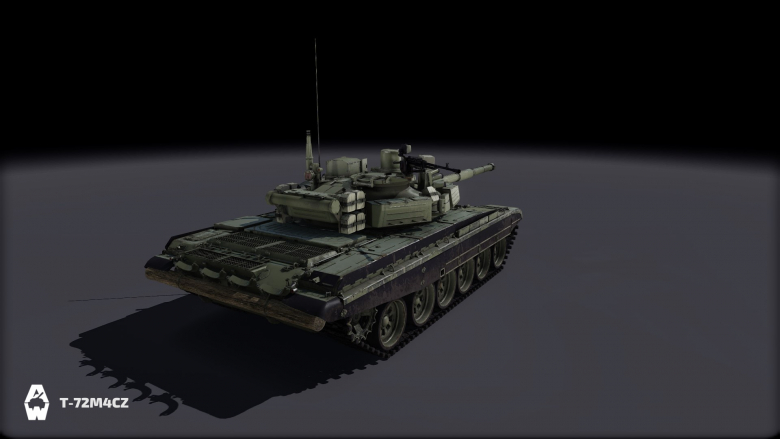
Click the image to open a larger version
When it comes to protection, you’ll have the chance to unlock a module providing you with extra module protection and repair speed. The mobility section will offer two additional upgrade modules:
- Module doubling the track hitpoints
- Module providing you with a bonus to acceleration as well as hull and turret traverse rates
And, finally, there will be the main ability of the tank, which belongs to the firepower section. The Battlefield Management System (BVIS) module will provide you with 2 percent rate of fire bonus for each teammate near your position.
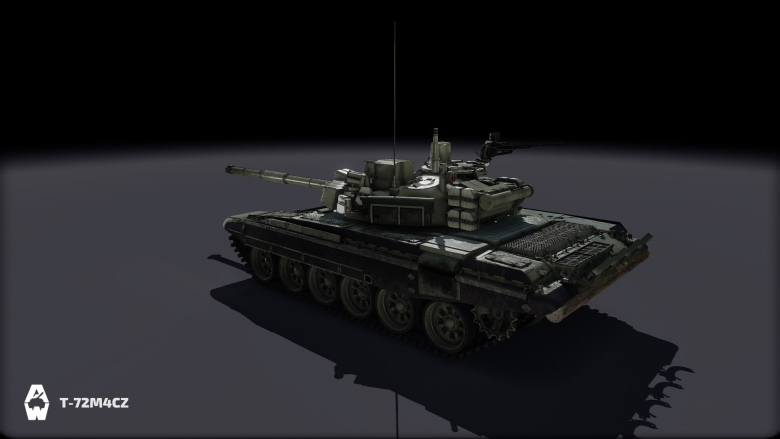
Click the image to open a larger version
We hope that you’ll enjoy this MBT as well as the entire Battle Path and, as always:
See you on the battlefield!




